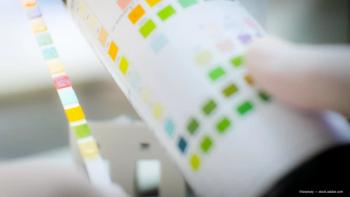
Question mark over Novartis combination therapy
The twelve-month primary analysis results from the Novartis sponsored Phase II MONT BLANC study investigating the efficacy and safety of combining Visudyne (Novartis Pharma AG) and Lucentis (Novartis Pharma AG, Genentech Inc.) have been released and so far are showing no significant differences.
The twelve-month primary analysis results from the Novartis sponsored Phase II MONT BLANC study investigating the efficacy and safety of combining Visudyne (Novartis Pharma AG) and Lucentis (Novartis Pharma AG, Genentech Inc.) have been released and so far are showing no significant differences.
The 24-month randomized, double-masked, multicentre trial in patients with subfoveal choroidal neovascularization secondary to age-related macular degeneration aims to evaluate whether Visudyne combined with Lucentis is not inferior to Lucentis monotherapy with respect to the mean change from baseline in visual acuity (VA) and to evaluate the proportion of patients with a treatment-free interval of at least three months duration after Month 2. At the Month 12 examination, mean VA in the Visudyne combination therapy group improved 2.5 letters from baseline compared with a 4.4 letter improvement in the Lucentis monotherapy group. In the combination therapy group, 96% of patients had a three-month treatment-free interval, compared with 92% in the Lucentis monotherapy group.
Twelve-month results of the MONT BLANC study show that combining standard-fluence Visudyne with Lucentis 0.5 mg can deliver VA improvements that are non-inferior to a Lucentis monotherapy regimen with three Lucentis loading doses followed by injections on a monthly as-needed basis (non-inferiority margin of 7 letters). There was no significant difference between the combination and monotherapy groups with regard to proportion of patients with a treatment-free interval of at least three months duration after Month 2. There were no unexpected safety findings, and adverse event incidence was similar between treatment groups.
Additional post hoc analysis showed that 85% of patients in the Visudyne combination therapy group, compared with 72% in the Lucentis monotherapy group, had a treatment-free interval of at least four months duration after Month 2. Median time to first retreatment after month 2 was extended by ~1 month in the combination group (month 6) versus the monotherapy group (month 5). Patients in the combination group received, on average, a total of 4.8 ranibizumab injections compared with 5.1 in the monotherapy group and a total of 1.7 Visudyne treatments compared with 1.9 sham treatments in the monotherapy arm. Results are based on ITT analyses (with LOCF); per-protocol analyses yielded similar results. Overall, only 15 patients discontinued the study before Month 12 (6%).
"Mont Blanc is the European study, providing the first data within the SUMMIT clinical trial programme and showed that patients treated with Visudyne combination therapy had non-inferior visual acuity to patients treated with Lucentis monotherapy," said Bob Butchofsky, chief executive officer of QLT Inc. "The results from DENALI (the US study), which includes a Visudyne reduced fluence arm, and EVEREST (in Asia), which studies combination therapy in polypoidal choroidal vasculopathy, may add to the knowledge about the potential benefits of combining Visudyne and Lucentis."
Newsletter
Get the essential updates shaping the future of pharma manufacturing and compliance—subscribe today to Pharmaceutical Technology and never miss a breakthrough.













































